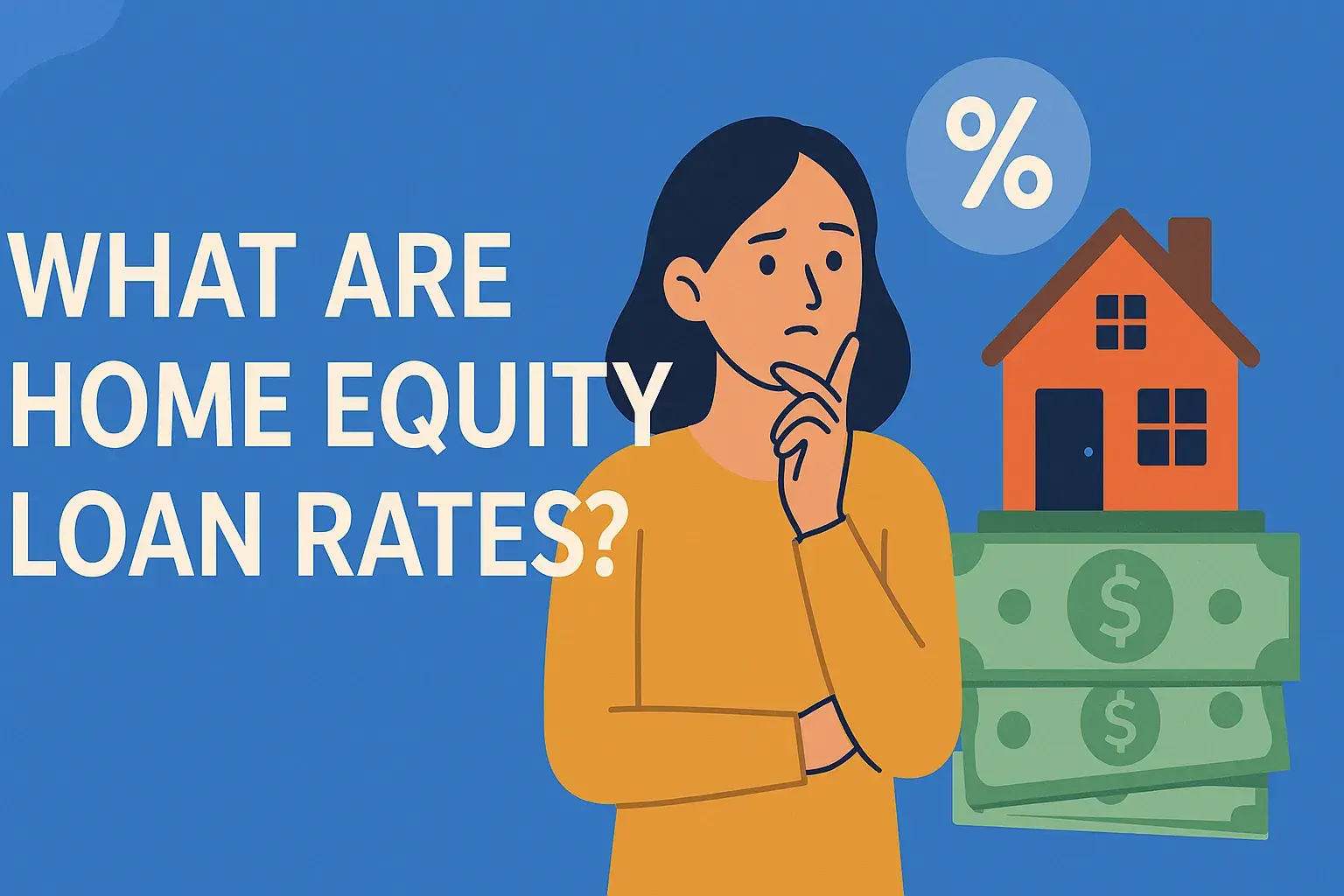-
Posted on: 23 Aug 2024

-
Buying a home is one of the biggest financial decisions you'll ever make. Navigating the home loan application process can seem daunting, but with the right information and preparation, you can increase your chances of success. This comprehensive guide will walk you through each step, from pre-approval to closing, providing valuable insights and practical tips to help you secure the financing you need for your dream home.
1. Pre-Approval: Setting the Foundation for Success
Before you even start house hunting, getting pre-approved for a home loan is crucial. Pre-approval gives you a clear idea of how much you can borrow, strengthens your negotiating position with sellers, and demonstrates to real estate agents that you're a serious buyer.
Benefits of Pre-Approval
- Determines Your Budget: Know your borrowing limit and avoid falling in love with properties beyond your financial reach.
- Strengthens Your Offer: Sellers are more likely to accept offers from pre-approved buyers.
- Speeds Up the Process: Having pre-approval streamlines the loan application process once you find a home.
- Identifies Potential Issues: The pre-approval process can uncover any credit or financial issues that need to be addressed before you formally apply.
How to Get Pre-Approved
- Gather Your Financial Documents: You'll need to provide documentation of your income, assets, and debts (more details below).
- Choose a Lender: Shop around for the best interest rates and loan terms. Consider banks, credit unions, and online lenders.
- Complete the Application: Fill out the lender's application form, providing accurate information about your financial situation.
- Submit Your Documents: Provide all required documents to the lender for review.
- Undergo Credit Check: The lender will check your credit report to assess your creditworthiness.
- Receive Your Pre-Approval Letter: If approved, you'll receive a letter outlining the loan amount, interest rate, and loan terms.
2. Gathering Your Documents: Preparing for the Application
A well-prepared application significantly increases your chances of approval. Gather all necessary documents before starting the formal application process. This will save time and reduce stress.
Essential Documents You'll Need
- Proof of Income:
- Pay stubs (covering the last 30-60 days)
- W-2 forms (for the past two years)
- Tax returns (for the past two years)
- If self-employed: Profit and loss statements, Schedule C
- Asset Verification:
- Bank statements (covering the last 2-3 months)
- Investment account statements (stocks, bonds, mutual funds)
- Retirement account statements (401(k), IRA)
- Gift letters (if receiving gift funds for the down payment)
- Debt Verification:
- Credit card statements
- Loan statements (auto loans, student loans, personal loans)
- Mortgage statements (if applicable)
- Identification:
- Driver's license or other government-issued photo ID
- Social Security card
- Purchase Agreement: (Once you've found a property)
- A signed purchase agreement outlining the terms of the sale.
- Other Documents: (Depending on your situation)
- Divorce decree (if applicable)
- Bankruptcy discharge papers (if applicable)
- VA eligibility certificate (if a veteran)
3. Completing the Loan Application: Providing Accurate Information
Once you've found a property and have a signed purchase agreement, you'll need to complete the formal loan application. Accuracy is paramount. Double-check all information before submitting it.
The Uniform Residential Loan Application (URLA)
The URLA, also known as Fannie Mae Form 1003, is the standard form used by most lenders. It collects comprehensive information about you, the property, and the loan you're seeking.
Key Sections of the Loan Application
- Borrower Information: Personal details, including name, address, social security number, and date of birth.
- Employment Information: Current and previous employment history, including employer names, addresses, and income details.
- Income and Assets: Comprehensive details about your income sources and assets, including bank accounts, investments, and retirement funds.
- Property Information: Details about the property you're purchasing, including address, purchase price, and intended use.
- Loan Details: Type of loan, loan amount, loan term, and desired interest rate.
- Declarations: Questions about your financial history, including bankruptcies, foreclosures, and outstanding judgments. Answer honestly and accurately.
- Acknowledgment and Agreement: Your signature acknowledging the accuracy of the information provided and agreeing to the terms of the application.
Tips for Completing the Application
- Be Accurate and Honest: Provide accurate and truthful information. Discrepancies can delay or even disqualify your application.
- Answer All Questions: Don't leave any questions blank. If a question doesn't apply, write "N/A."
- Double-Check Your Work: Review the application carefully before submitting it.
- Ask Questions: Don't hesitate to ask the lender for clarification if you're unsure about anything.
4. Underwriting: The Lender's Assessment Process
Underwriting is the process where the lender evaluates your financial risk and determines whether to approve your loan. This involves a thorough review of your credit history, income, assets, and the property itself.
What Underwriters Look For
- Creditworthiness: A good credit score (typically 620 or higher, but higher is better) demonstrates responsible borrowing habits.
- Debt-to-Income Ratio (DTI): DTI compares your monthly debt payments to your gross monthly income. Lenders typically prefer a DTI below 43%.
- Loan-to-Value Ratio (LTV): LTV compares the loan amount to the appraised value of the property. A lower LTV (larger down payment) reduces the lender's risk.
- Appraisal: An independent appraisal ensures that the property's value aligns with the purchase price.
- Property Condition: The lender will also assess the condition of the property to ensure it meets their lending standards.
Potential Underwriting Issues and How to Address Them
- Low Credit Score: Improve your credit score by paying bills on time, reducing debt, and correcting any errors on your credit report.
- High DTI: Reduce your debt by paying off credit cards or other loans.
- Low Appraisal: Negotiate with the seller to lower the purchase price, appeal the appraisal, or consider walking away from the deal.
- Insufficient Funds: Increase your savings or explore alternative sources of funds, such as gift funds from family members.
The Role of the Appraisal
The appraisal is a critical part of the underwriting process. The lender will order an independent appraisal to determine the fair market value of the property. If the appraisal comes in lower than the purchase price, you may need to renegotiate the price, increase your down payment, or walk away from the deal. You have the right to receive a copy of the appraisal.
5. Loan Approval and Closing: The Final Steps
Once the underwriting process is complete and the lender is satisfied with your application, you'll receive loan approval. This is a significant milestone, but it's important to review the loan documents carefully before proceeding to closing.
Reviewing the Loan Documents
You'll receive a set of loan documents outlining the terms of your loan, including the interest rate, loan term, monthly payments, and closing costs. Review these documents carefully and ask the lender to clarify any questions you may have. Pay particular attention to:
- Promissory Note: Your promise to repay the loan.
- Mortgage or Deed of Trust: The document that secures the loan with the property.
- Closing Disclosure: A detailed breakdown of all closing costs.
Closing: Signing the Documents and Taking Ownership
Closing is the final step in the home buying process. You'll meet with the lender, escrow officer, and potentially the seller to sign the loan documents and transfer ownership of the property. Be prepared to bring a certified check or wire transfer to cover your closing costs and down payment.
What to Expect at Closing
- Reviewing and Signing Documents: You'll sign numerous documents, including the promissory note, mortgage, and closing disclosure.
- Paying Closing Costs: You'll pay all closing costs, including lender fees, title insurance, recording fees, and property taxes.
- Receiving the Keys: Once all documents are signed and funds are disbursed, you'll receive the keys to your new home!
Post-Closing Considerations
After closing, be sure to:
- Set up your mortgage payments: Ensure you have a system in place for making timely mortgage payments to avoid late fees and potential foreclosure.
- Maintain homeowner's insurance: Keep your homeowner's insurance policy active to protect your property from damage or loss.
- Budget for property taxes: Factor in property taxes when budgeting for your monthly expenses.








